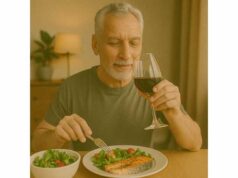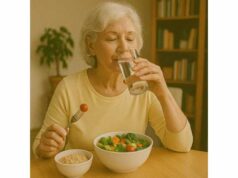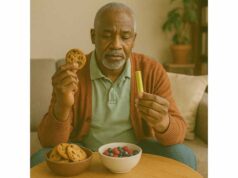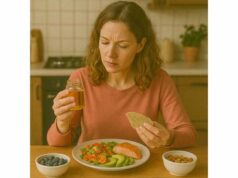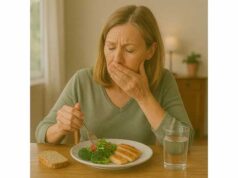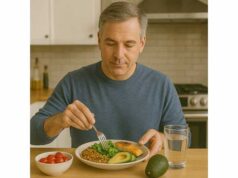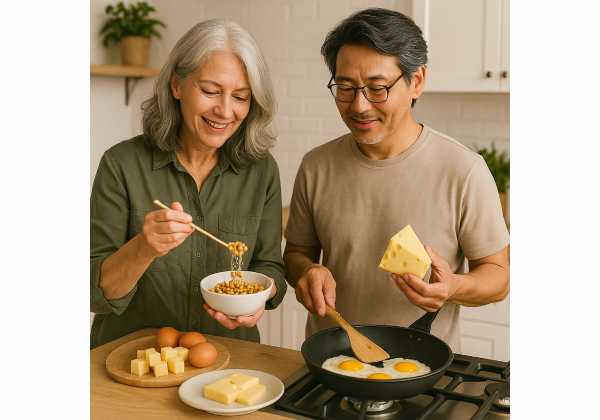
A steady supply of vitamin K2 is one of those quiet habits that can add up over decades. K2 helps proteins in bone and blood vessels do their jobs—steering calcium into the skeleton and away from soft tissues. If your goal is to stay strong on your feet and keep arteries resilient, food-first sources like aged cheeses, natto, and egg yolks can play a practical role. This guide explains how K2 works, how MK-4 and MK-7 differ, and how much food it takes to cover typical needs. You will also find clear advice on pairing K2 with vitamin D and calcium, plus safety notes if you use anticoagulants. For a broader view of how daily eating shapes longevity, see our concise primer on nutrition for longevity fundamentals. Then come back here for specific, actionable steps to bring K2-rich foods onto your plate—at breakfast, in packed lunches, and at easy weeknight dinners.
Table of Contents
- How Vitamin K2 Supports Bone and Vascular Health
- MK 4 vs MK 7: Food Sources and Differences
- Daily Portions: Cheese, Natto, Eggs, and Liver
- Pairing K2 with Vitamin D and Calcium from Food
- Safety Notes and Anticoagulant Considerations
- Easy Ways to Add K2 Rich Foods to Meals
- Who Might Need Extra Attention to K2 Intake
How Vitamin K2 Supports Bone and Vascular Health
Vitamin K is a family of fat-soluble compounds. Vitamin K1 (phylloquinone) comes mainly from leafy greens, while vitamin K2 (menaquinones: MK-4, MK-7, and others) is produced by bacteria and accumulates in certain animal foods and fermented foods. K2’s value in healthy aging lies in its role as a co-factor for γ-carboxylation—an enzyme step that “activates” specific proteins so they can bind calcium properly.
Two vitamin K-dependent proteins matter most here:
- Osteocalcin in bone helps lock calcium into the matrix. Without enough carboxylated osteocalcin, the skeleton may not mineralize efficiently, even if calcium and vitamin D are adequate.
- Matrix Gla Protein (MGP) in blood vessel walls acts as a brake on calcium crystallization. When MGP is fully carboxylated, it inhibits vascular calcification and helps preserve arterial elasticity.
Over time, better activation of osteocalcin is associated with higher lumbar spine bone mineral density (BMD) in controlled trials, while lower levels of inactive MGP correlate with more flexible arteries. In practical terms, K2 supports the distribution of calcium—toward bone strength and away from arterial stiffness. That is why K2 often appears alongside vitamin D and calcium in discussions of bone and vascular health.
Importantly, K2 is not a stand-alone fix. Bones respond best to a full package: dietary protein to supply collagen building blocks, calcium and vitamin D for mineral delivery and absorption, and weight-bearing movement to stimulate remodeling. On the vascular side, blood pressure control, LDL-lowering food patterns, physical activity, and not smoking remain the primary drivers of long-term outcomes. K2 helps the system work as designed; lifestyle does the heavy lifting.
Aging changes how we absorb and utilize nutrients. Stomach acid may be lower, medications can alter fat absorption, and appetite can fluctuate. Because K2 is fat-soluble, pairing K2-rich foods with a source of fat (often present naturally in cheese and eggs) improves uptake. Consistency also matters: a little K2 most days is preferable to large sporadic bursts. The sections below translate this physiology into portions, shopping lists, and simple meal ideas that fit routine life.
MK 4 vs MK 7: Food Sources and Differences
MK-4 and MK-7 are the most discussed forms of vitamin K2 in human diets.
- MK-4 (short-chain menaquinone):
- Where it shows up: animal foods—especially egg yolks, liver, dark poultry meat, and some dairy fat. Unlike other menaquinones, MK-4 in animals is largely converted from K1, so its levels depend on the animal’s diet.
- Half-life: relatively short (on the order of hours), which means blood levels spike and fall more quickly.
- Takeaway: practical for day-to-day intake when you routinely eat eggs and some dairy.
- MK-7 (long-chain menaquinone):
- Where it shows up: fermented foods, primarily natto (fermented soybeans) and certain aged cheeses. Bacterial fermentation is key to MK-7 formation.
- Half-life: longer (measured in days), yielding steadier circulating levels with regular intake.
- Takeaway: useful when you can include small, frequent servings of natto or aged cheeses.
Cheese is not all the same. MK-7 and other long-chain menaquinones cluster in fermented, aged cheeses. Soft, fresh cheeses (like cottage cheese or ricotta) tend to be low. Many semi-hard and hard varieties—Gouda, Edam, Jarlsberg, Emmental—often contain meaningful K2, though exact values differ by culture strains, time, and temperature of aging.
Natto is uniquely rich. A few tablespoons can deliver far more MK-7 than a typical cheese portion. Its strong aroma and texture are an acquired taste, but modern versions (frozen packs, milder seasonings) make it easier to try in small amounts layered over rice, tucked into nori, or mixed with scallions and mustard.
Eggs contribute MK-4. Yolks carry the K2; whites do not. If you usually choose egg-white omelets, consider swapping in one or two whole eggs several times per week to cover MK-4 while also boosting choline for brain and liver health.
What about supplements? This guide focuses on foods. Controlled trials show MK-7 can reduce markers of arterial stiffness in specific groups and improve the carboxylation status of vitamin K-dependent proteins. Still, food sources offer more than K2 alone—protein, calcium, and bioactive peptides—so it makes sense to start with the plate.
For broader ideas on bringing fermented foods into a longevity-minded routine, see our practical guide to fermented options and how to use them without overhauling your diet.
Daily Portions: Cheese, Natto, Eggs, and Liver
There is no separate recommended daily allowance specifically for K2, but you can cover practical needs through consistent portions of K2-rich foods while also meeting the overall vitamin K targets set for adults. Here is a food-first way to build a baseline, with flexibility for preferences and culture.
A simple weekly template (choose most days):
- Aged cheese: 20–40 g (¾–1½ oz) daily on average. Think two thin slices on whole-grain toast, a small cube plate with fruit and nuts, or grated over vegetables. Rotate varieties (Gouda, Edam, Emmental, Jarlsberg).
- Egg yolks: 4–8 yolks per week (e.g., two eggs at breakfast twice a week, plus an egg in a lunch salad). This supports MK-4 intake and adds high-quality protein and B-vitamins.
- Natto: 1–3 tablespoons a few times per week (or a standard single pack once weekly if you like it). Stir into warm rice, mix with mustard and scallions, or layer on avocado toast for a savory twist.
- Liver (optional): 30–60 g (1–2 oz) once weekly. Chicken liver is milder and cooks quickly. This can be helpful for those who do not eat cheese or natto but should be balanced with total vitamin A intake.
If you avoid dairy: Rely more on natto, eggs, and occasional liver. Some long-fermented plant foods (certain tempeh, aged plant cheeses) may contain K2, but levels vary widely and are not always labeled.
If you are plant-forward or vegan: Natto becomes the anchor. Consider fortified products if available locally. Pairing natto with calcium-set tofu and leafy greens creates a robust bone-supportive meal even without animal foods.
Budget tips:
- Buy cheese in blocks, not pre-sliced, and freeze portions.
- Use cheese as a “condiment,” not the main course—thin layers or grating goes far.
- Look for natto in Asian markets’ freezer sections; one pack can be split over two meals.
Portions in real meals:
- Breakfast: Whole-grain toast with 25 g aged cheese and sliced tomato; or a 2-egg veggie scramble.
- Lunch: Bean and grain bowl topped with a tablespoon of natto and sesame; or a kale-cabbage slaw with 30 g grated hard cheese.
- Dinner: Roasted vegetables with olive oil, a small side of whole-grain pasta, and 20 g shaved Parmesan-style cheese; or chicken livers with onions and mushrooms, served alongside arugula.
For a fuller bone-health plate beyond K2, skim our guide to bone-supportive daily choices you can mix and match.
Pairing K2 with Vitamin D and Calcium from Food
Calcium is the mineral, vitamin D boosts calcium absorption and regulates calcium-handling genes, and K2 helps use calcium correctly by activating osteocalcin and MGP. All three act in sequence. Building meals that include each piece reduces the chance that any one step becomes the limiting factor.
Practical pairings:
- Egg-and-greens breakfast: Two eggs (MK-4) cooked in olive oil, served with sautéed kale (K1 and minerals) and a small sprinkle of aged cheese (K2 + calcium). If sunlight is limited, ensure vitamin D from foods like fortified yogurt or consider your clinician’s advice on supplements.
- Natto lunch bowl: Brown rice, edamame, and 1–2 tbsp natto (MK-7) with sliced cucumbers; add calcium-set tofu and sesame for more minerals and healthy fats.
- Mediterranean dinner: Lentil salad with arugula and cherry tomatoes, topped with 20–30 g shaved hard cheese (K2 + calcium); a side of grilled sardines contributes calcium and vitamin D via small edible bones.
How much calcium and vitamin D from food?
- Calcium from food can often reach 1,000–1,200 mg/day when you include dairy, calcium-set tofu, canned fish with bones, and leafy greens.
- Vitamin D from food alone is harder to meet consistently; common food sources (fatty fish, eggs, fortified dairy or alternatives) help, but many adults still need individualized supplementation based on blood levels and sun exposure.
Timing and absorption notes:
- K2 is fat-soluble; include a source of fat (often present naturally). A drizzle of extra-virgin olive oil on greens or whole-milk yogurt with a cheese plate works well.
- Split calcium across meals (e.g., 300–400 mg at a time) to improve uptake.
- If you take a vitamin D supplement, a small amount of fat enhances absorption, but exact timing alongside K2 is less important than daily consistency over months.
Movement completes the trio. Weight-bearing exercise signals bone to incorporate minerals; brisk walking, stair climbs, resistance bands, and balance work help maintain density and reduce fall risk.
For a step-by-step food list to cover calcium and vitamin D in everyday meals, see our practical guide to food sources of calcium and vitamin D.
Safety Notes and Anticoagulant Considerations
Vitamin K2 from food is safe for most adults, but there are important exceptions and consistency rules.
If you take warfarin or similar vitamin K-antagonist anticoagulants:
- Vitamin K (K1 and K2) can reduce the effect of warfarin. The key is consistency—aim for a steady day-to-day intake rather than large swings.
- Do not suddenly increase or eliminate K-rich foods without coordination with your clinician. An abrupt change can alter your INR (a measure of blood thinning) and require a dose adjustment.
- If you plan to add aged cheeses, natto, or more eggs, let your care team know in advance so your INR can be monitored and your medication adjusted if needed.
If you use non–vitamin K anticoagulants (DOACs like apixaban, rivaroxaban, dabigatran): K intake does not directly counteract these drugs, but the general advice—steady dietary patterns, limited alcohol, and medication adherence—still applies.
Other medication flags:
- Orlistat and some bile acid sequestrants can reduce absorption of fat-soluble vitamins, including K. If you use these, ask about timing and whether a multivitamin makes sense.
- Long courses of broad-spectrum antibiotics may reduce intestinal K production; focus on food sources and discuss with your clinician if appetite is low.
Sodium, lipids, and cheese: Aged cheeses can be higher in sodium and saturated fat. Keep portions modest (20–40 g/day on average) and balance your day with fiber-rich plants, legumes, and unsalted nuts. If you are working on LDL reduction, choose naturally lower-fat cheeses or use very thin shavings for flavor intensity with less total fat.
Allergies and intolerances: If dairy causes symptoms, lean on natto and eggs (if tolerated). Lactose-reduced aged cheeses exist, but always prioritize comfort and tolerance.
Food safety for liver: Cook poultry or beef liver thoroughly to 74°C (165°F) internal temperature. Buy small amounts and refrigerate promptly. If you are pregnant, avoid pâtés made with unpasteurized ingredients.
If you want help building a heart-smart foundation alongside K2, our framework for heart-supportive plates can guide everyday choices.
Easy Ways to Add K2 Rich Foods to Meals
Think “little, often.” K2 works best as a steady background nutrient. Here are ways to weave it into routines without overhauling your menu.
Breakfast ideas (5–10 minutes):
- Whole-grain toast with 20–30 g aged cheese, sliced tomato, and cracked pepper.
- Two-egg omelet with leftover roasted vegetables; finish with a light sprinkle of grated hard cheese.
- Overnight oats with chia and a side of a small cheese cube plate and berries.
Lunch ideas (packable):
- Salad jar: arugula, chickpeas, cherry tomatoes, olives, and 25 g diced hard cheese; vinaigrette on the side.
- Grain bowl: brown rice or farro with edamame, cucumber, 1 tbsp natto, sesame seeds, and nori strips.
- Egg-based: whole-egg frittata slice with a side of coleslaw; or a nori-wrapped rice triangle with a thin layer of natto and scallions.
Dinner ideas (simple prep):
- Roasted crucifers (broccoli, Brussels sprouts) tossed with olive oil; serve with lemony lentils and 20 g shaved cheese to finish.
- Pan-seared sardines or trout with a warm potato-green bean salad and mustard-herb vinaigrette; optional thin cheese shavings for richness.
- Chicken livers sautéed with onions and mushrooms, served over garlicky greens; portion 30–60 g liver per person.
Snacks:
- Apple slices with 15–20 g aged cheese and a handful of walnuts.
- Rice crackers topped with avocado mash, a teaspoon of natto, and chili flakes.
- Hard-boiled egg with a small side of pickled vegetables.
Flavors and textures that help:
- Use acid + fat + salt in balance: lemon juice or vinegar brightens cheese; olive oil rounds natto’s edges; herbs (parsley, chives) lift richness.
- Grate or shave cheese finely to distribute flavor—less goes further.
- For natto skeptics, start with ½ tablespoon mixed into something you already enjoy (miso soup, brown rice, or avocado toast).
If you like to batch-cook, our primer on make-ahead building blocks shows how to pre-portion cheese, eggs, and natto add-ins so weekday choices are effortless.
Who Might Need Extra Attention to K2 Intake
Most adults can cover K2 with a small daily portion of aged cheese or eggs and a few tablespoons of natto weekly. Certain groups, however, should pay closer attention and personalize their approach.
1) Postmenopausal adults focused on bone strength. Bone turnover accelerates with the loss of estrogen. Ensuring adequate K2 (plus calcium and vitamin D) supports better osteocalcin activation and lumbar spine BMD over time. Pair K2-rich foods with resistance training and protein distribution across meals.
2) Adults with a history of low dietary fat intake or fat malabsorption. Very low-fat diets, celiac disease, chronic pancreatitis, or medications that block fat absorption can impair K uptake. Foods that naturally combine K2 with fat—eggs, aged cheese—may be better tolerated. Medical evaluation can clarify whether targeted supplementation is warranted.
3) People with high coronary artery calcium or concerns about arterial stiffness. While food is not a replacement for guideline-directed medical therapy, K2’s role in activating MGP makes a consistent food supply sensible alongside blood pressure, lipid, and glucose management. Discuss the whole picture—statins, exercise, diet pattern—with your clinician.
4) Adults with long courses of broad-spectrum antibiotics or frequent hospitalizations. Antibiotics can alter gut microbiota, reducing endogenous menaquinone production. During and after treatment, lean more on direct K2 sources from food.
5) Dairy-free or plant-centric eaters. K2 can still be covered with natto and egg yolks (if not vegan). Strict vegans should emphasize natto and seek fortified options where available. Combining natto with calcium-set tofu, legumes, and greens builds a strong plant-based bone strategy.
6) People on vitamin K-antagonist anticoagulants. You can eat K-rich foods, but do it consistently and coordinate with your care team so INR stays in range. If you plan significant changes (e.g., adopting natto weekly), let your clinic know first.
7) Those with limited appetite or unintentional weight loss. Small, energy-dense K2 sources (thin cheese shavings over soups and vegetables, egg-based breakfasts) deliver nutrients without large volumes of food. Texture-modified options—soft scrambled eggs, melted cheese on whole-grain toast—may be easier to manage.
Finally, remember that K2 is one piece of a long-game strategy. The same meals that deliver K2 can be built to include protein, fiber, and polyphenols for broader resilience. Choose a few changes you can keep doing next month and next year; that is where longevity benefits live.
References
- Menaquinone-7 supplementation improves arterial stiffness in healthy postmenopausal women. A double-blind randomised clinical trial (2015, RCT)
- Effects of vitamin K supplementation on bone mineral density at different sites and bone metabolism in the middle-aged and elderly population (2024, Systematic Review)
- Investigating the Effects and Mechanisms of Combined Vitamin D and K Supplementation in Postmenopausal Women: An Up-to-Date Comprehensive Review of Clinical Studies (2024, Review)
- Vitamin K – Health Professional Fact Sheet (2021, Government Fact Sheet)
Disclaimer
This article provides general nutrition information and is not a substitute for personalized medical advice, diagnosis, or treatment. Always consult your healthcare professional before making significant dietary changes, especially if you take anticoagulant medication, have kidney or liver disease, or manage osteoporosis or cardiovascular disease. If you use warfarin or similar medicines, coordinate any change in vitamin K intake with your clinician.
If you found this helpful, please consider sharing it with a friend—on Facebook, X (formerly Twitter), or wherever you like—and follow us for future updates. Your support helps us continue creating clear, evidence-based guides.

